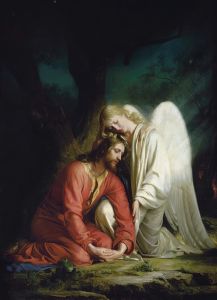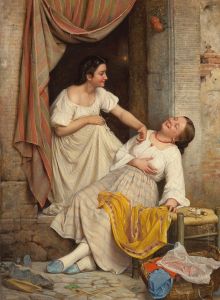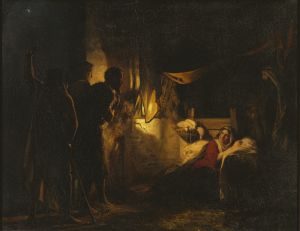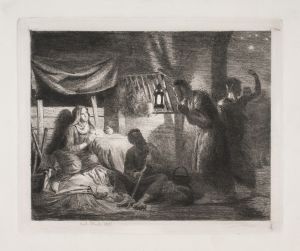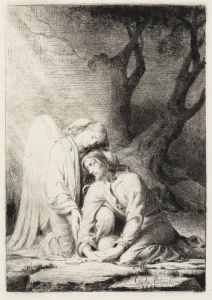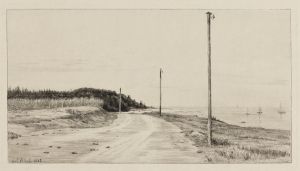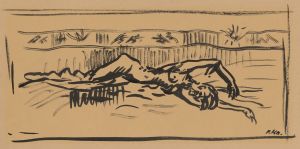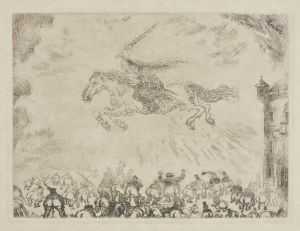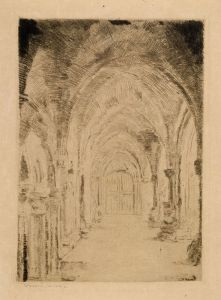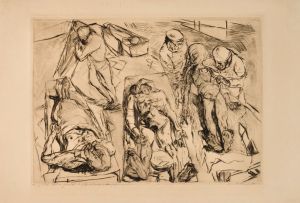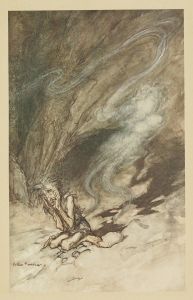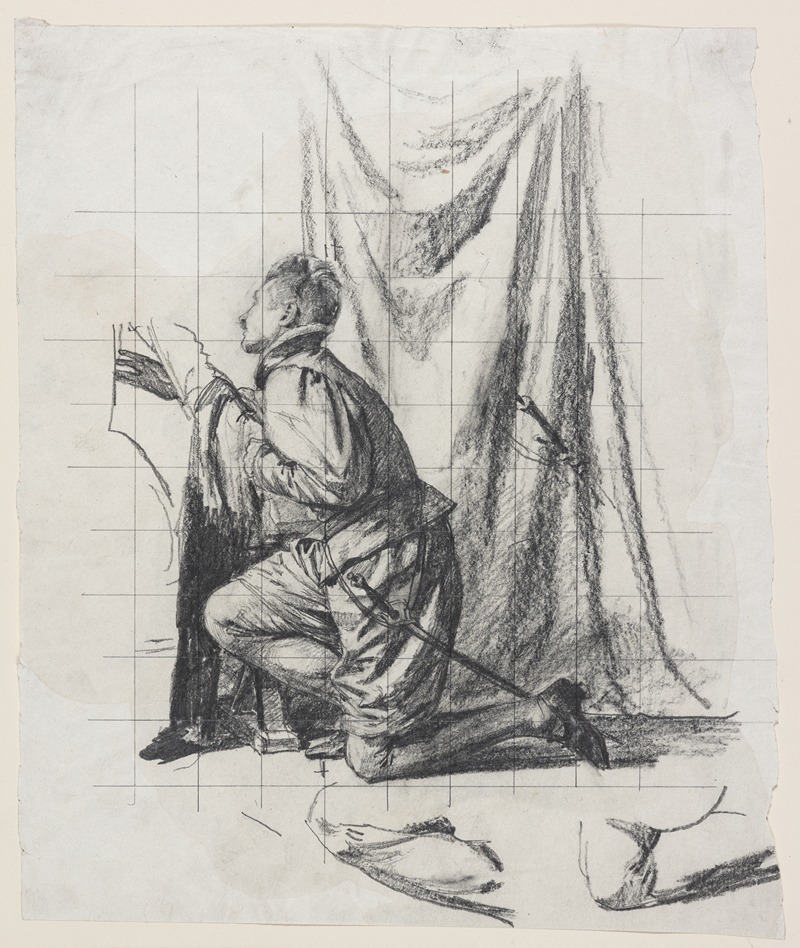
Udkast til raderingen Den unge mand og Døden
A hand-painted replica of Carl Bloch’s masterpiece Udkast til raderingen Den unge mand og Døden, meticulously crafted by professional artists to capture the true essence of the original. Each piece is created with museum-quality canvas and rare mineral pigments, carefully painted by experienced artists with delicate brushstrokes and rich, layered colors to perfectly recreate the texture of the original artwork. Unlike machine-printed reproductions, this hand-painted version brings the painting to life, infused with the artist’s emotions and skill in every stroke. Whether for personal collection or home decoration, it instantly elevates the artistic atmosphere of any space.
Carl Bloch's painting Den unge mand og Døden (translated as The Young Man and Death) is a work by the renowned Danish artist Carl Heinrich Bloch (1834–1890). Bloch is widely celebrated for his contributions to 19th-century Danish art, particularly for his historical and religious paintings, which often exhibit a dramatic and emotional intensity.
This particular painting, Den unge mand og Døden, is believed to explore themes of mortality and the transient nature of life. The title itself suggests a symbolic encounter between a young man and the personification of death, a motif that has been explored in art and literature for centuries. Bloch's ability to convey complex emotions and narratives through his use of light, shadow, and composition is evident in this work, as in many of his other pieces.
The painting reflects Bloch's mastery of realism and his skill in capturing human emotion. His works often drew inspiration from both classical and Romantic traditions, and he was known for his meticulous attention to detail. While the exact date of creation for Den unge mand og Døden is not widely documented, it is consistent with Bloch's broader body of work, which frequently addressed existential and spiritual themes.
Carl Bloch studied at the Royal Danish Academy of Fine Arts and later traveled extensively in Europe, particularly in Italy, where he was influenced by the works of the Old Masters. His exposure to Renaissance and Baroque art is evident in his dramatic use of chiaroscuro and his ability to create a sense of depth and atmosphere in his paintings.
While Den unge mand og Døden is not as widely known as some of Bloch's other works, such as his series of paintings for the King's Oratory at Frederiksborg Castle, it remains a testament to his artistic skill and his interest in exploring profound and universal themes. The painting is an example of how Bloch used his art to engage with questions of life, death, and the human condition.
Further details about the painting, such as its current location or specific historical context, are not readily available in existing sources. However, it remains an important part of Carl Bloch's oeuvre and reflects his enduring legacy as one of Denmark's most significant artists of the 19th century.





